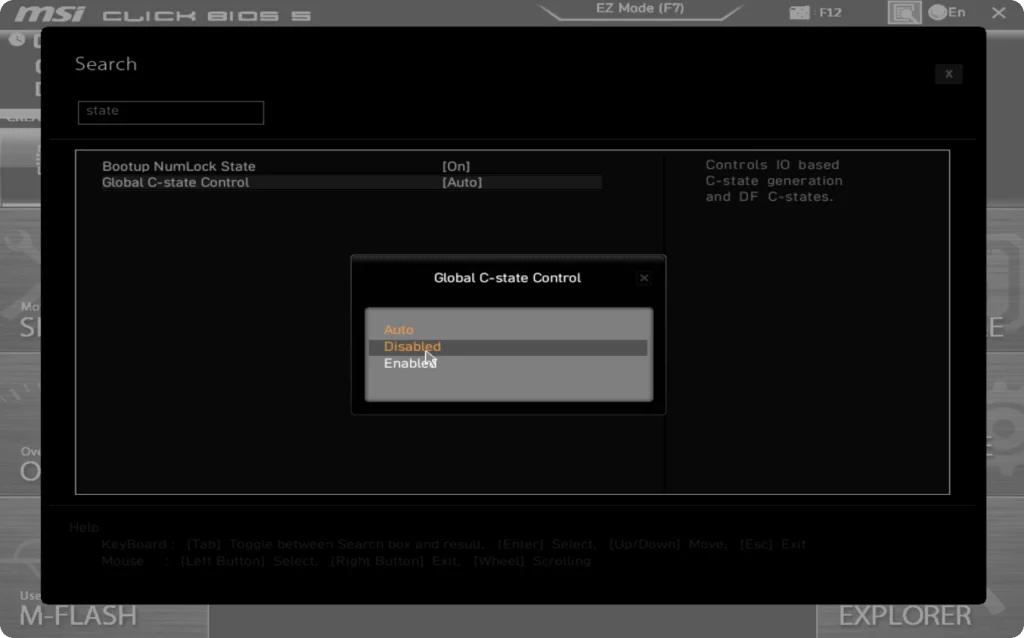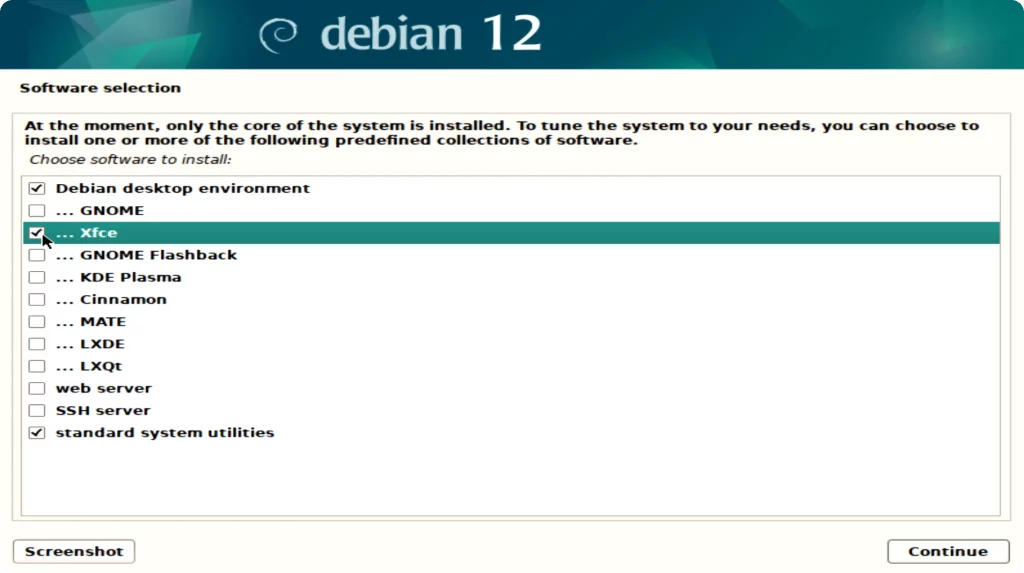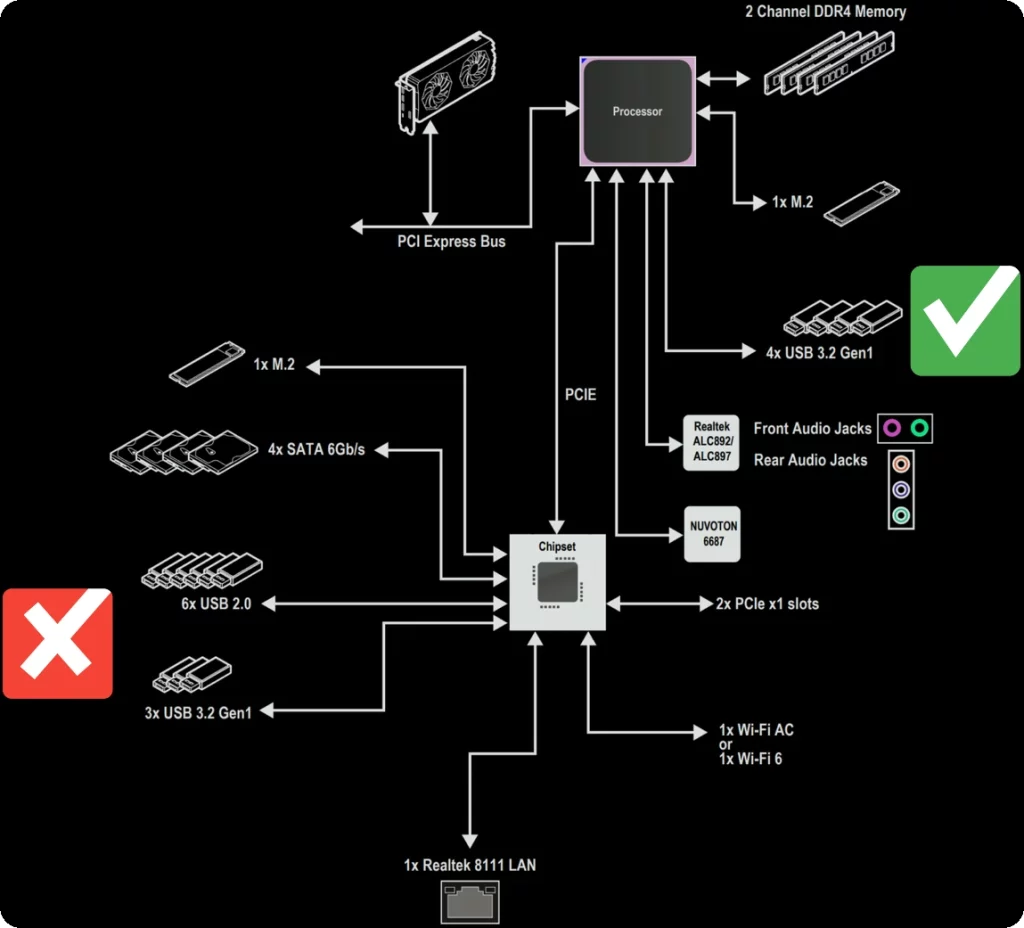Disclaimer
This how I configure Linux workstations for real-time audio using Debian 12 and Jack. If you’re thinking about doing any of this to your Desktop PC, don’t.
Why Debian?
Production systems should be predictable and stable. Debian manages both. The last thing you want is a package update to knacker your carefully crafted setup. If you’re running a rolling release Linux distribution, this is a matter of when, not if. Unfortunately, this is something people fail to understand until they experience it themselves.
If you’re looking for OS Recommendations, have a look at Debian, Rocky, or Ubuntu LTS.
What about PipeWire?
While I believe PipeWire holds promise for the future of Linux audio, it’s still under active development. This guide will utilize the mature and stable Jack server for a reliable experience.
So it begins
0. Disable global c-state control and configure the all-core frequency. This keeps the CPU locked at the selected frequency.

1. During the installation, I select the XFCE Desktop Manager. This prevents Debian from installing Wayland and PipeWire by default.

2. After the initial install, it’s time to get a real-time kernel. If you’re on AMD / Intel, this process is relatively straightforward. NVIDIA users will need to download and install the *.run driver package directly from NVIDIA.
Find the current Linux kernel version.
uname -a Locate the matching realtime kernel
apt search linux-image-KERNELVERSIONInstall the realtime kernel
sudo apt install linux-image-KERNELVERSION-rt-amd643. Remove any traces of PipeWire
sudo apt purge pipewire*4. Install Jack, Pulseaudio Bridge, nonfree firmware, and rtirq.
sudo apt install jackd2 qjackctl pulseaudio-module-jack firmware-linux-nonfree rtirq-init5. Enable threadirqs and disable Spectre / Meltdown mitigations.
sudo nano /etc/default/grub
6. Hardware timers
sudo nano /etc/udev/rules.d/40-timer-permissions.rulesAdd the following
KERNEL=="rtc0", GROUP="audio"
KERNEL=="hpet", GROUP="audio"7. Set max user frequency
sudo nano /etc/tmpfiles.d/maxfreq.confAdd the following
w /sys/class/rtc/rtc0/max_user_freq - - - - 30728. Swappiness and watches
sudo nano /etc/sysctl.d/99-sysctl.confAdd the following
vm.swappiness = 10
fs.inotify.max_user_watches = 5242889. Setting resource limits
sudo nano /etc/security/limits.confAdd the following
@audio - rtprio 99
@audio - memlock unlimited10. Add the user to the audio group
sudo usermod -a -G audio replacethiswithyourusername11. Default values for Pulseaudio
nano ~/.config/pulse/daemon.confAdd the following
default-sample-format = float32le
default-sample-rate = 48000
alternate-sample-rate = 44100
default-sample-channels = 2
default-channel-map = front-left,front-right
resample-method = speex-float-10
enable-lfe-remixing = no
high-priority = yes
nice-level = -11
realtime-scheduling = yes
realtime-priority = 70
rlimit-rtprio = 90
daemonize = no12. Update initramfs and reboot the system
sudo update-initramfs -u13. Plugging your audio interface into USB ports directly connected to the CPU will result in lower latency.

And that’s how I configure workstations for real-time audio using Debian 12 and Jack. You can watch the system in action live on Twitch.
Have questions about your setup? Ask in our forums.





Add comment